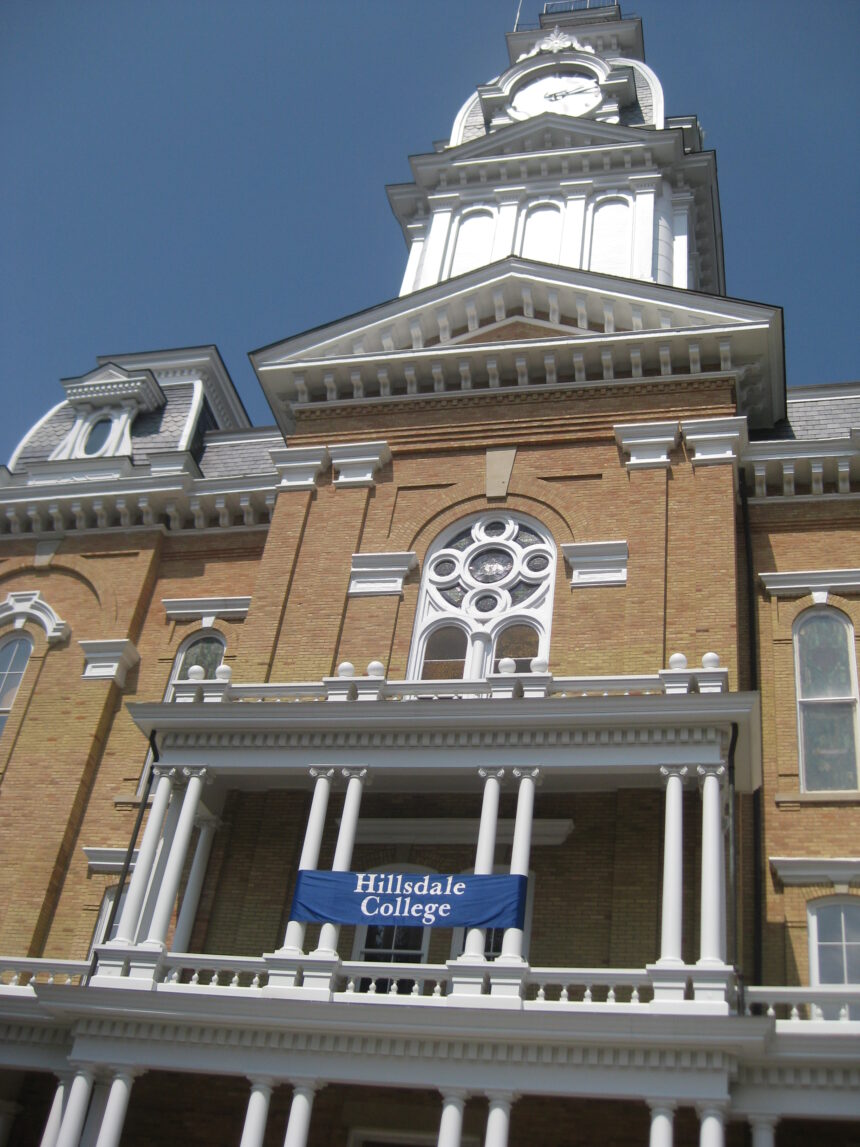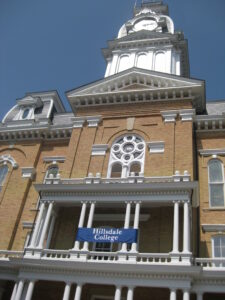Hillsdale College’s national reputation for academic success continues to improve, according to an annual ranking of best liberal arts colleges released Wednesday. Rising two spots from last year, Hillsdale tied with four schools as the nation’s 67th best liberal arts college in the U.S. News and World Report’s annual ranking.
While college administrators and faculty say they are pleased with the bump, they emphasize that the ranking doesn’t tell the full story.
“The rating is good for what it’s good for, but it’s not the ultimate arbiter of quality,” Provost David Whalen said. “The current status is good, but I think we’re better than it suggests.”
The rankings are determined by totaling a school’s points, which are received in weighted categories including: acceptance rate, alumni giving, class sizes, freshmen retention rate, and a peer acceptance score.
While Hillsdale ranked highly in most of these categories, its peer acceptance score (determined by other schools’ presidents, provosts, and deans of admission) was much lower than colleges with a similar overall score. Out of five possible points, Hillsdale earned only 2.5.
Weighted at 22.5 percent, this peer review category significantly impacts a school’s ranking and Whalen said the low number “reveals a misperception” of Hillsdale among other college administrators.
He said the low peer review could be derived partially from an “ideological bias.”
Assistant Professor of Politics John Grant agreed with Whalen, saying that classical approaches to education are usually viewed negatively by college administrations. Grant, who taught and worked in administration at a college comparable to Hillsdale in size and ideology for 12 years, said its reputation among like schools suffered for similar reasons.
He added that Hillsdale’s 96 percent freshmen retention rate is “astonishingly high” in comparison.
“A lot of schools are happy with retention rates in the 70s and 80s,” Grant said.
High retention rates positively impact the college because it shows students are able to handle Hillsdale’s coursework and enjoy the community. In turn, committed students attract high quality faculty, Grant said.
Another category in which Hillsdale ranked poorly was its 13 percent average alumni giving rate. Admitting that the college needs to allocate more college resources to connecting with alumni, Whalen said Hillsdale students’ relationship with the college is improving dramatically and will likely lead to a better giving percentage.
Both Whalen and Doug Banbury, associate vice president of admissions, said the college is making changes that may affect future rankings, but both emphasized that the ranking isn’t the reason for the changes.
“There are things we will do that will impact our ranking,” Banbury said, “but the rankings don’t impact our strategy.”
Banbury said that while some students use rankings like this to create a short list of schools to which they will apply, it does not drastically alter who ends up enrolling.
“Those who decide to come to Hillsdale come because Hillsdale is the place for them,” Banbury said. “They don’t come because we’re number 67.”
In addition, students are attracted to Hillsdale for many reasons not accounted for in this ranking, Whalen said.
“Most important things in life escape metrics,” he said.
After working with students from other institutions, including a yearlong stint at the University of Colorado, Professor of History Brad Birzer agreed Hillsdale’s quality isn’t captured by this ranking.
“I’d be more than happy to take a representative sample of our faculty and of our students and compare them to the equivalent at any other university,” Birzer said. “We’d best them.”


